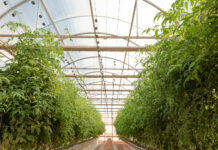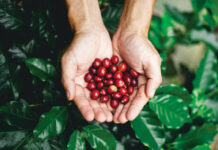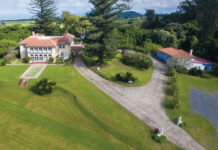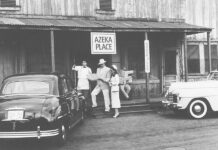A Mill on the Mountain
In 1787, Thomas Jefferson fell in love with olives. In a letter penned after crossing southern France and Italy, he promoted the olive tree as a potential crop for the United States: “I am persuaded there are many parts of our lower country where the olive tree might be raised, which is assuredly the richest gift of heaven.” His enthusiasm, and the European seedlings sent home, inspired many plantings in the Southeast, but Jefferson never saw his vision realized, having misjudged the tree’s climatic requirements.
This ancient tree has found a new home and advocate on Maui.
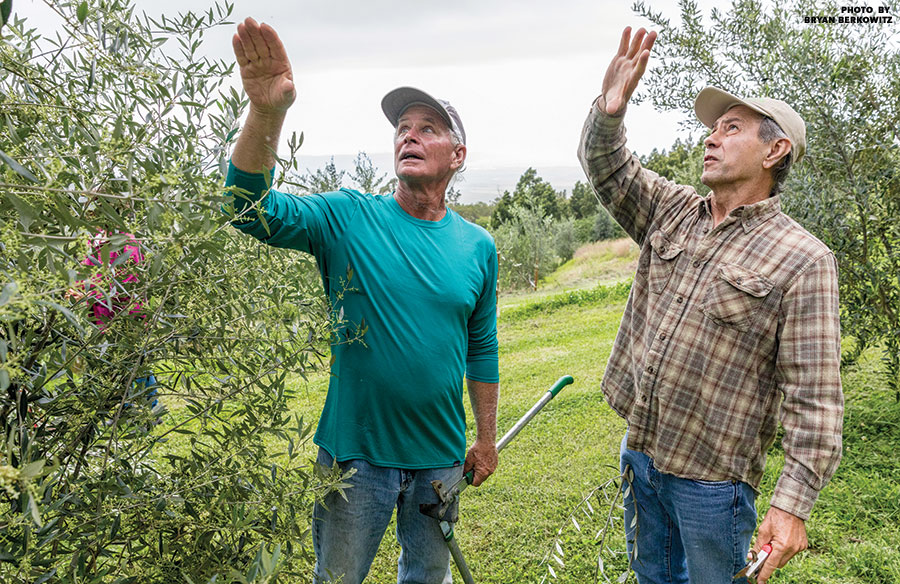
Olives, and the oil in particular, intrigued Jamie Woodburn precisely because the trees thrive in a very narrow climatic band here, between 2,000 and 3,500 feet in elevation— with temperatures and aridity that mirror the Mediterranean climate beloved by olives. Like Jefferson, Woodburn also saw a vacant niche—no one else was producing olives in Hawai‘i. But he’s done his homework.
“It’s been a vertical learning curve,” Jamie says. He’s referring to the decision to lease ten acres of Upcountry farmland, plant a crop no one had produced commercially in the islands, and wait at least four years to see any payoff. He shrugs off the observation that he had little experience growing food for profit, citing forty-plus years of growing large gardens and orchards and several decades of managing a nursery.
The scale of Jamie’s commitment is evident at the farm. Rows of evenly spaced olive trees carve terraces into the slope of Haleakalā, just off Waipoli Road. With the right varietals for high-density planting, each acre can hold over 200 trees, spaced six feet apart. Regular pruning keeps the trees from growing too tall or too wide. Jamie and his sons, Josh and Sam Circle-Woodburn, have already installed over 2,000 plants, which range from knee-high to eight feet or more.
“It’s like having 2,000 kids,” jokes Jamie. And they’re still planting.
The number of trees on the property understates their experience to date, as they have helped plant thousands more elsewhere on Maui. Jamie may be the first to produce fresh oil in the islands (in close partnership with Olinda Olive Orchard, which houses their shared mill), but he’s also supporting others who see a future in olives. He seems unfazed about potential competition. “I don’t think there would ever come a time when [Maui] could produce enough oil [to] have to consider exporting the product.”
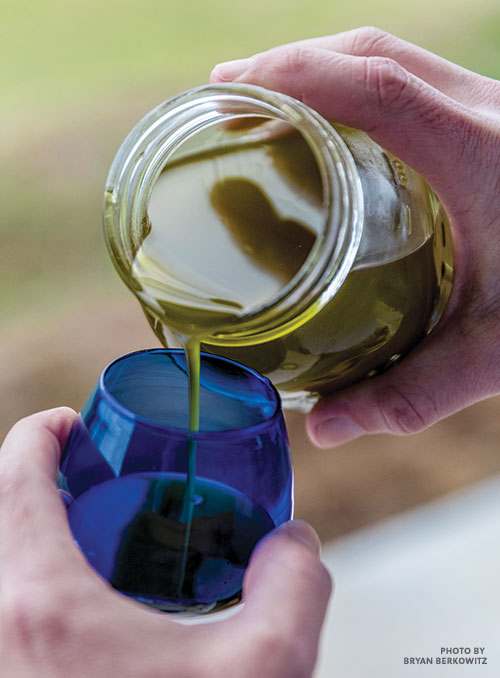
Given the daunting scale of the project, the Woodburns knew they needed more than book learning. They sought expert guidance at the University of California–Davis Olive Center, a university/industry coalition that seeks to do for olives what the campus’s research and education center did to help the state become a premier wine-producing region. The Woodburns took courses, completed internships, found a consultant with deep ties to the industry, and even flew to Italy to find the best equipment.
And the oil? Looking for an independent assessment, they shipped a sample from their first milling to UC–Davis for testing, using olives from different Maui orchards. The result: high-quality, extra-virgin olive oil; robust, flavorful, peppery and complex.
Jamie isn’t waiting for the trees to mature before developing related products and markets. Infusing imported oil with local flavors, such as Meyer lemon or liliko‘i (passion fruit), can help fill gaps in local production. An enclosed wooden farm stand is nearing completion. His son Josh is also a visionary. Where I see a ledge on the side of the cozy building, he sees customers sampling single-varietal olive oils, the bicoastal view framed by windows and shelves filled with oils, liliko‘i butter and other locally grown products.
“Next year we harvest a significant volume of olives,” says Jamie.
Jefferson would be pleased.


